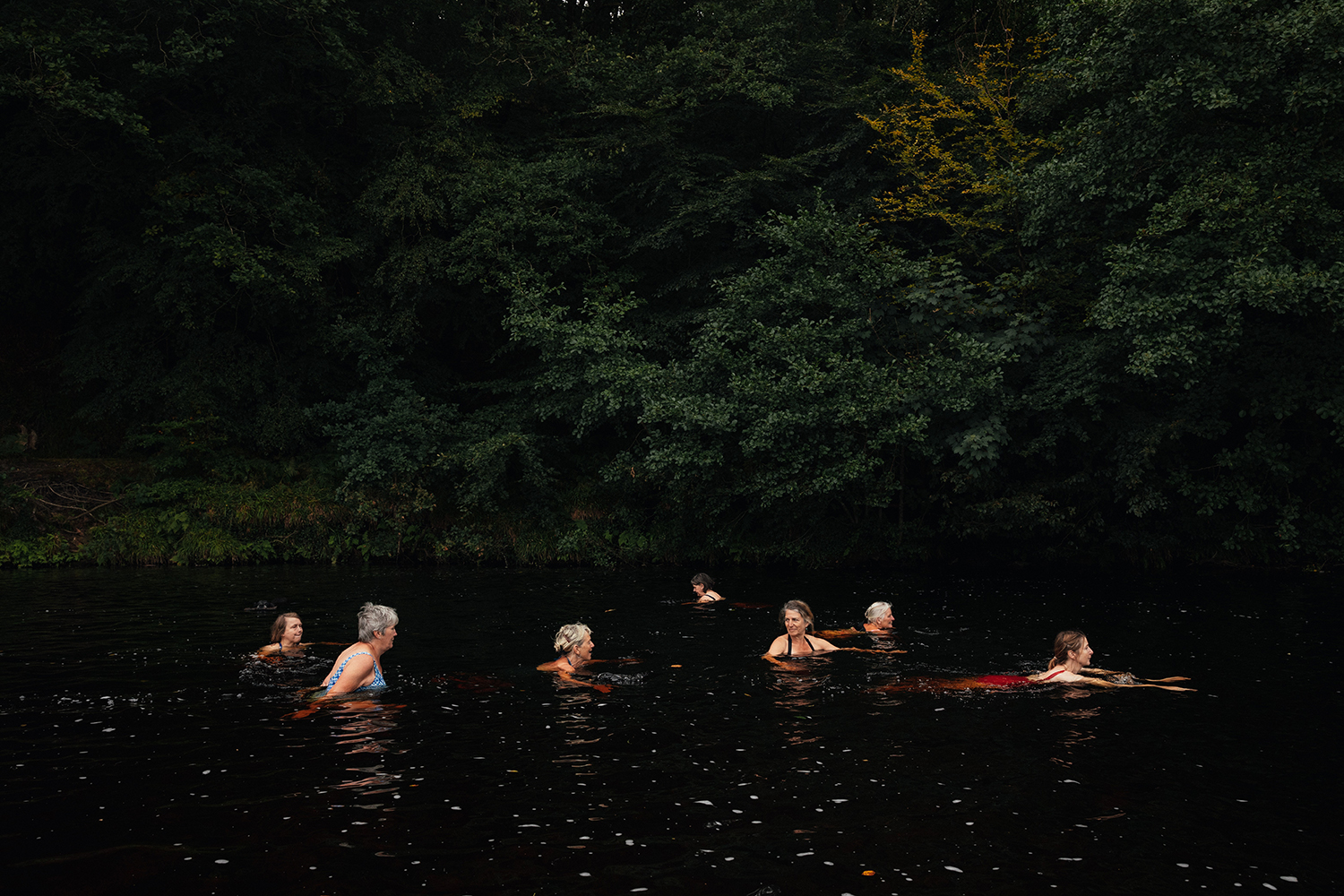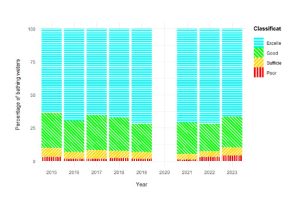
Designated Bathing Water Classifications – 2023
The annual classification of inland, tidal and coastal bathing water sites in England, Wales, Scotland and Northern Ireland have been released over the last month. The classifications are as a result of monitoring by the four nations environment agency equivalents and follow a ranking as follows - Poor, Sufficient, Good and Excellent, if a bathing receives a Poor classification for five consecutive years it is de-designated.
The monitoring is carried out by each region’s environmental agency and determines the level at which a site meets bathing water criteria and standard. However, this monitoring is very much only a snapshot of water quality, bathing sites that are even Excellent (or those that reach minimum standard- Sufficient and above) are only classified based on up to 20 samples taken during the bathing season.
This level of monitoring is really insufficient and does not give a representative real-time picture. The agencies can also decide when to take samples, so it is possible samples could only be taken on dry days, or with tidal currents in a specific orientation, so not always during specific events such as during or after rainfall.
What is more regulations state that and agency only has to take “up to twenty water samples” with some places recorded just 10 tests.
Actual wording from England’s Environment Agency –
“The Environment Agency takes up to twenty water samples at each of England’s designated bathing waters during the bathing water season between May and September each year. A classification for each bathing water is calculated annually based on samples from the previous four years.”
The headlines across the four nations this year are that there have been little to any improvements in water quality and in a lot of cases a drop in the number of designations in the Excellent category, and in England especially an increase in those categorised as Poor. The number of bathing waters designated as Poor in England has increased from 12 to 18, which is absolutely unacceptable. What is more, under law, those which are classified as poor have to have an action plan for improving water quality, but still several, especially those on our already sparsely monitored and designated rivers, have now been classified as poor for up to three years.
England’s classifications of bathing water show an increase in poor and a decrease in excellent rated bathing areas.
The monitoring system is clearly floored and the follow up on designations is underfunded, under resourced and not fit for purpose, leaving our bathing waters in critical danger. What is more bathing water samples are only tested for E.coli and Enterococci. Under current regulation PFAs and Phosphates are not tested for, which can both have significant effects on water quality.
If you would like to find out more or how you could work with your local community to have a site become a designated bathing water, then visit Protecting Wild Waters.
To see how your local bathing waters have been designated there are full lists and classifications here –
If you’d like to find out more about the state of our blue spaces then you can read our 2023 Water Quality Report.

